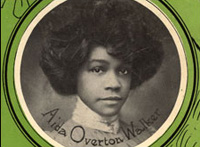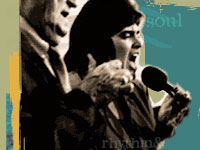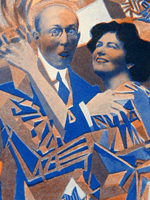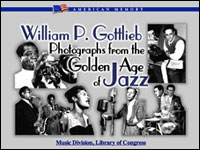African American Sheet Music, 1850-1920

This collection presents 1,305 pieces of sheet music composed by and about African Americans, ranging chronologically from antebellum minstrel shows to early 20th-century African-American musical comedies. Includes works by renowned black composers and lyricists, such as James A. Bland, Will Marion Cook, Paul Laurence Dunbar, Bert Williams, George Walker, Alex Rogers, Jesse A. Shipp, Bob Cole, James Weldon Johnson, J. Rosamond Johnson, James Reese Europe, and Eubie Blake. A "Special Presentation: The Development of an African-American Musical Theatre, 1865-1910" provides a chronological overview that allows users to explore "the emergence of African-American performers and musical troupes, first in blackface minstrelsy, and later at the beginnings of the African-American musical stage in the late 1890s."
In addition, sheet music can be studied to examine racial depictions, both visually, on sheet music covers, and in lyrics; styles of music, such as ragtime, jazz, and spirituals; and a variety of topics of interest to popular audiences, including gender relations, urbanization, and wars. Includes a useful 80-title bibliography and 15-title discography. Much of the material is disturbing due to its heavy dependence on racial caricatures; however, students can gain insight into racial attitudes through an informed use of this site.
River of Song

This site is a companion to a Smithsonian series produced in collaboration with public broadcasting stations in 1999. The series, River of Song, traced the history and character of contemporary American music along the Misssissippi River, from the head of the river in Minnesota to its mouth in Louisiana. The site offers 300-word biographies of each of the approximately 40 artists and music groups featured in the four-part series. Artists featured include Minnesota folk singer John Koerner, the Ojibwe powwow drummers of the Chippewa Nation, Illinois bluegrass group the Bob Lewis Family, and Louisiana blues musician Eddie Bo. Each profile includes 34 photographs and links to the musicians' own or related websites and artists are also indexed by genre and name.
The Music Along the River section provides more general information about the history and character of music in the four regions along the Mississippi River. There is a roughly 750-word narrative description of the music in each region. Each regional section includes links to approximately 10 articles from past Smithsonian Folklife Festival and Cultural Studies programs and five to seven other links to informational articles about that region.
A Teacher's Guide designed to accompany a videotape or CD of the music provides over 30 different activities for elementary and middle school students, including songs and specific exercises in rhythm, scales, notes, drumbeat patterns, and chords. Though the site is frustratingly devoid of audio clips of the music presented in the series, some of the related links do provide audio samples. This site is particularly ideal for music teachers, but could also be used in history classes to discuss American culture and the development of distinctively American kinds of music.
Popular American Music

This archive of American popular songs in their original form allows the user to explore the history of popular music in the U.S. from the 1850s to the present. It offers more than 400,000 pieces of sheet music, anthologies, and orchestra and band arrangements. Also available are 62,500 recordings.
The collection includes a wide variety of music genres, from music for theater, television, and motion pictures to rhythm and blues and rock. The collection can be browsed by name, title, cover art subject, or date. Or search the archive by keyword or combination of keyword, title, description, composer, or publisher. There are 12 links to other digital sheet music collections. Those researching American popular music should find this extensive collection very useful.
William P. Gottlieb: Photographs from the Golden Age of Jazz

Writer-photographer William P. Gottlieb (1917–2006) documented the New York and Washington, D.C. jazz scene from 1938 to 1948 in more than 1,600 photographs. During the course of his career, Gottlieb took portraits of prominent jazz musicians—including Louis Armstrong, Duke Ellington, Charlie Parker, Billie Holiday, Dizzy Gillespie, Earl Hines, Thelonious Monk, Ella Fitzgerald, and Benny Carter—and legendary venues, such as 52nd Street, the Apollo Theatre, Cafe Society, the Starlight Roof, and Zanzibar. The site also features approximately 170 related articles by Gottlieb from Down Beat magazine; 16 photographs accompanied by Gottlieb's audio commentary on various assignments; a 4,300-word biography based on oral histories; and a 31-title bibliography. Extremely valuable for jazz fans, music historians, musicians, and those interested in urban popular culture.
The John and Ruby Lomax 1939 Southern States Recording Trip

In 1939, John Lomax, Curator of the Library of Congress Archive of American Folk Song, and his wife Ruby Terrill Lomax, embarked on a 6,500-mile journey through the South. During their travels, they recorded more than 700 folk tunes that now are available as audio files on this website. Genres include ballads, blues, children's songs, cowboy songs, fiddle tunes, field hollers, lullabies, play-party songs, spirituals, and work songs.
The site also presents field notes containing personal information on some of the more than 300 performers the Lomaxes recorded, notes on geography and culture, and excerpts from correspondence. More than 50 letters to and from the Lomaxes, 380 photographs, a bibliography of 22 works, and a map are also offered. The site is keyword searchable and can be browsed by subject as well as title, song text, and performer.